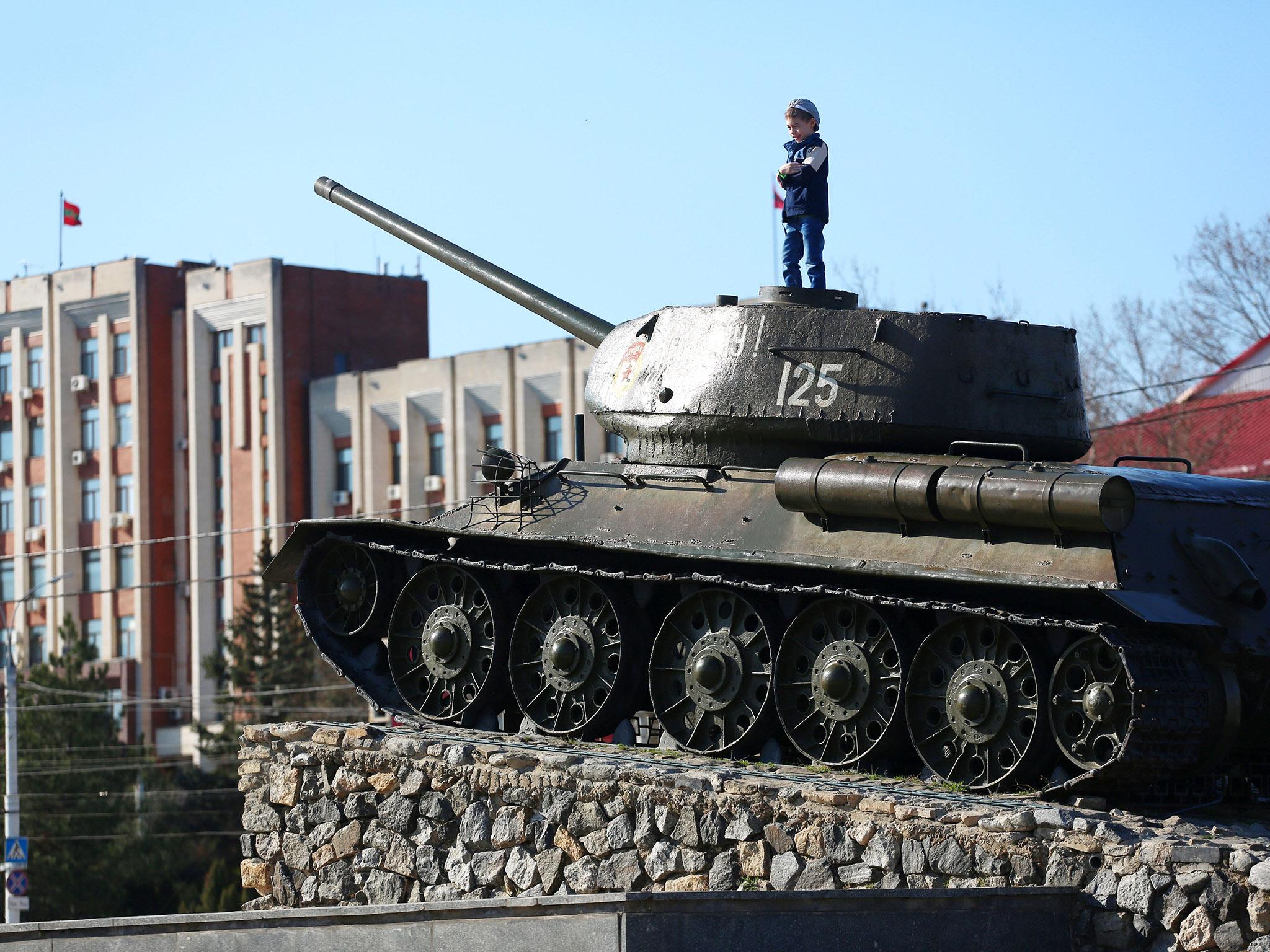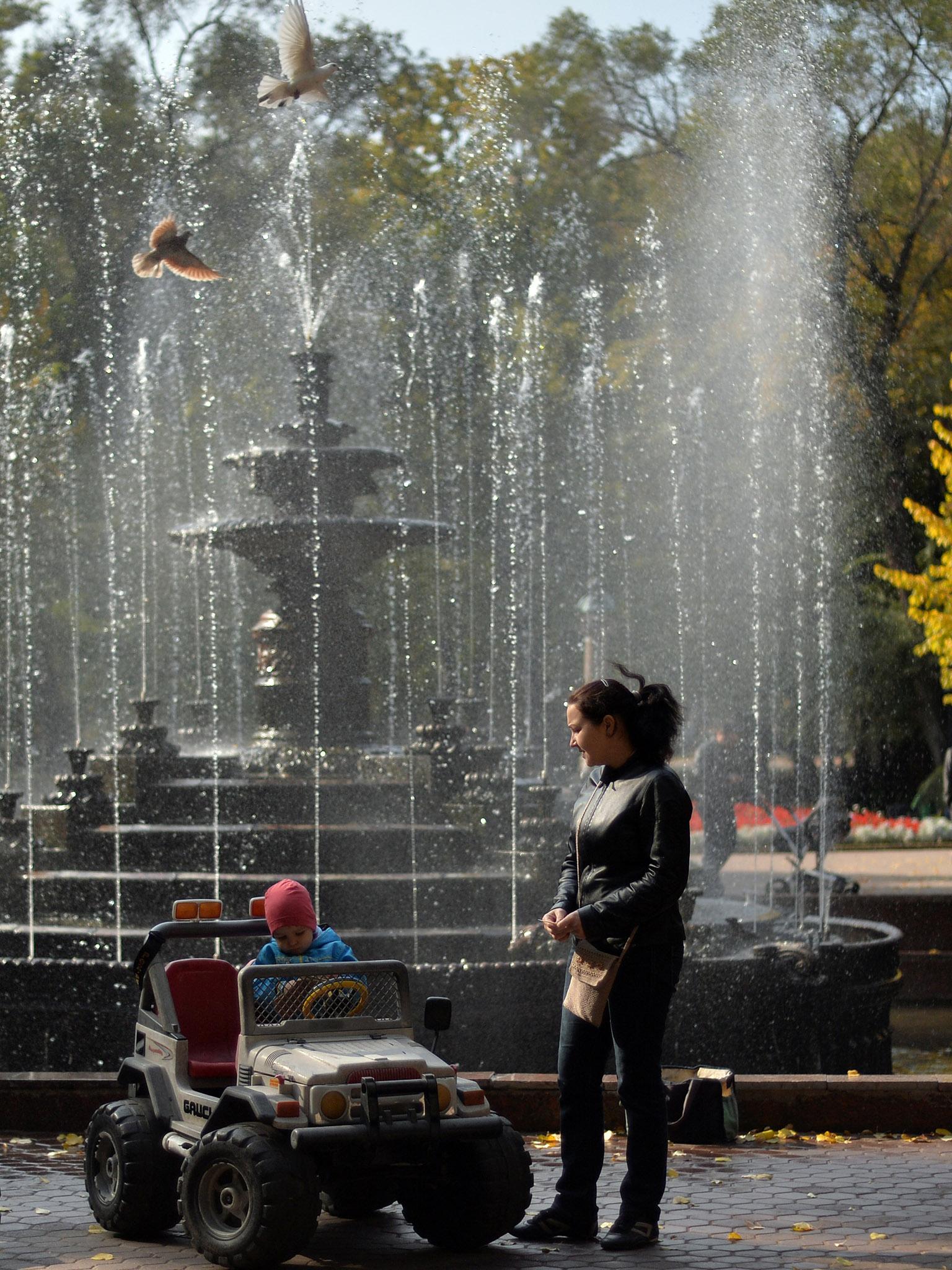Inside Transnistria, the Kremlin ‘mafia’ state inching towards communist rule
This breakaway nation is run by two former Soviet-era security officials, and is very much reminiscent of a Cold War entity. Borzou Daragahi travelled to the Russian-run nether region


The driver and passengers on the rickety bus taking us across the demarcation line are garrulous and friendly. As we get to the Russian-controlled checkpoints the chattering comes to an abrupt halt as our passports are taken away, and then quickly returned. But then the conversations liven up again. In between sarcastic jibes about curious tourists visiting the breakaway Soviet-style enclave, the graying driver insists we visit the Tighina or Bender Fortress, a well-preserved former garrison built by the Ottoman empire in the 16th century, a relic of a previous occupation of Moldova.
Others insist that the smattering of foreign visitors among the day labourers and commuters aboard the bus simply must visit Transnistria’s other sights: the monuments, monasteries and covered marketplaces of the breakaway region, the sprawling Soviet-style squares and ancient fortresses.
But as we enter Transnistria and make our way into the capital city of Tiraspol, the capital of this region of Moldova recognised as a country only by other rogue Russian-dominated enclaves, the most striking and prevalent presence along the wide boulevards are the billboards and subsidiaries of a small obscure private firm that seems to be everywhere: the Sheriff Company.
With a corporate logo that is shaped like the five-pointed star of a US law enforcement badge, the Sheriff Company dominates nearly everything in this Russian-backed enclave. Sheriff runs almost all the supermarkets, importing much of the food that makes its way in from Moldova proper and abroad. It is the main if not the only player in the automotive industry, selling cars, spare parts, oils and lubricants, say experts on the region. The petrol stations in this Kremlin-dominated statelet are run by Sheriff, as is the local football club, which has become hugely popular. It also produces beer and wine, and manufactures textiles, and is building hotels.

But there’s more. Sheriff, a shadowy firm managed by two former Soviet-era security officials, runs the local telecommunications network. It controls almost all of the broadcast media. And over the past three or four years, the company has dominated the presidency and the parliament through a political party which began taking over in 2016.
“There’s virtually nothing that they do not have a role in,” says Stephen Wolff, an expert on Transnistria at the University of Birmingham. Employing at least 12,000 people, experts say the company largely runs Transnistria. In some ways, say the smattering of Balkan and east Europe specialists who keep an eye on Transnistria, Sheriff has replaced the Communist Party that ruled Moldova until the collapse of the Soviet Union. Sheriff builds clinics and hospitals, and rewards promising pupils with prizes at its retail outlets. It has managed to secure an agreement by which it pays little or no taxes.
Its proprietors are Gushan Viktor Anatolyevich and Ogirchuk Dmitry Vasilyevich. Over the years, they have given few interviews. Calls and emails to the company have gone unanswered. Scholars say the company mostly communicates to the world via press releases on its website. Molodvans call Sheriff “the mafia”, says Elena Derjanschi, a journalist in Chisinau, the capital of Moldova. The company, which has grown from a small food and oil importer to become the dominant force in Transnistria over more than two and a half-decades, offers a glimpse into the future of several Kremlin-influenced political netherworlds.
Such post-Soviet land include breakaway enclaves in Ukraine’s Donestsk and Crimea and Georgia’s South Ossetia and Abkhazia as well as Russian-aligned but Armenian-controlled Nagorno-Karabakh in what was once part of Azerbaijan. “[Transnistria] is a region created by Russians,” says Dumitru Budianschi, an economist at the Expert-Grup, a Moldovan think tank. “They needed someone to manage this region. Instead of Sheriff, it could have been any other structure that will fulfil this function.”

Wedged to the southeast of Ukraine, the sleepy breakaway part of what was originally eastern Moldova is Russia’s westernmost outpost in Europe, with Kremlin troops and spies deployed throughout the region as “peacekeepers” since a 1992 war for Transnistrian independence that left more than 1,000 people dead. For Moscow, Transnistria holds significant strategic value. From the enclave, Russian forces can quickly lunge southeast towards the Ukrainian Black Sea port of Odessa, adding to pressure on the government in Kiev, which has been locked in a five-year conflict with pro-Kremlin forces in the east, while keeping Nato forces in Romania 200 kilometres away on alert.
Over the years, scholars and diplomats have described Transnistria as a paradigmatic “frozen conflict”, where official hostilities never end but pragmatism prevails. People-to-people exchanges continue, and both belligerent sides attempt to accommodate each other, politically and economically. But while the enclave’s battle with Moldova and its Soviet model of governance are frozen in time, the people of Transnistria have different aspirations. The biggest threat to its sustainability may be a moribund economy dominated by a handful of oligarchs, especially Sheriff.

Transnistria’s population has dropped from 700,000 at the end of the Cold War to 300,000 as the region’s young head to Moldova proper, which is also depopulating, and other parts of western and eastern Europe. During rush hour, the streets around the main squares are mostly empty. In central Tiraspol, a smattering of upscale cafes and western-looking fast-food joints serve small numbers of customers, likely an attempt by the business community to give the fading enclave a veneer of modernity and slow the stampede of the young who yearn for better lives. But it’s a tough sell.
“There are not many prospects here,” Jan, a 19-year-old medical student in Tiraspol, tells me. He is among a group we discreetly approach during an informal visit to the enclave on a sunny late autumn day. “Mostly young people want to leave. There are few jobs. And the salaries are small,” he says. “You can survive here, but since young people have big ambitions, they see that here is probably not the place to realise them.”
“The political situation is not so well, and there are no jobs,” says Alexandrina, another medical student, a woman in her early twenties. “Our diploma is not recognised in other countries.”
Asked about the role of the government they decline to speak. “We have freedom of speech,” Jan says. “But it’s a very small amount.”

Scholars say there are few civil liberties in Transnistria. Journalists and human rights activists have been arrested and targeted with violence for speaking out. Local advocacy groups remain under intense pressure and must report any foreign funding to Moscow. “Residents of Transnistria cannot choose their leaders democratically, and Transnistrian authorities restrict political activity,” said a 2017 note issued by the United Kingdom. “Freedom of religion, association, speech and assembly are all severely restricted and independent voices against the regime are suppressed.”
The photographer Anton Polyakov wrote about what it was like growing up in the isolated enclave. “We have grown up singing a national anthem and saluting a flag that is unrecognised by all states,” he wrote. “Our passports and currency are not accepted internationally.”
He yearned to be part of the rest of the world. “From my window on the seventh floor of a building in the centre of Tiraspol, Ukraine is visible, and in the other direction I can see Moldova – the country we are technically considered part of, even though Transnistria has voted to enter Russia,” he writes.

Furthering the enclave’s isolation, Russians have imposed a curriculum that downgrades the Latin script used by Romanian-speaking Moldovans in favour of Russian, a huge point of contention between Chisinau and Transnistria, which shut down Moldovan schools 15 years ago. “Our colleagues from Tiraspol think our curriculum is more attractive to students and see the risk of losing some students,” Vasile Sova, the Moldovan official in charge of reintegration, told the Institute for War and Peace Reporting last year.
Transnistrians also often complain about more immediate and mundane matters, including a lack of access to medication and consumer goods. During a recent Hepatitis outbreak, the enclave struggled to come up with treatments, and patients were forced to travel to Moldova, Ukraine or Russia.
To deal with such potential epidemics, the World Health Organisation has set up offices in Transnistria. But the region is isolated diplomatically. Though it flies its own flag, not even Moscow officially recognises it as an independent state, a status conferred upon it only by unrecognised Kremlin-backed enclaves in Georgia’s South Ossetia and Abkhazia as well as Nagorno-Karabakh. Neither the European Union nor the United States has any representative office there, and the Council of Europe has repeatedly extended sanctions and travel restrictions on its leadership.
In 2018, the United Nations General Assembly passed a resolution urging Russian troops to withdraw from Transnistria. Moscow ignored it. Not everyone in Transnistria is unhappy. As dusk approached, and we prepared to leave we spoke to one small businessman with a hardware store, who said he was making a decent living. He was a member of Moldova’s ethnic Turkish minority who said he enjoyed his life in the enclave, making occasional visits to Chisinau or to the southern region of the country from which he hails.
For retirees and some others living in Transnistria, it’s a sleepy and inexpensive refuge at the heart of eastern Europe, just a couple of hours by train or road to the beaches of the Black Sea. But despite its strategic value to the Kremlin, the one-company enclave is dying, illustrating the weaknesses of one of Russia’s favoured foreign policy tools.
The budget deficit is between 10 to 15 per cent of GDP, forcing large cash transfers from Moscow. Both Ukraine and Moldova have cracked down on those using Transnistria as a money-laundering hub, adding to fiscal pressures. Its 50,000 or so pensioners exceed the working population. Russia has been providing Transnistria with free natural gas for nearly 15 years, and propping up the economy with subsidies for retirees that amount to about $108 per person per year, according to Balkan Insight, a subsidy it may have to increase as more of the enclave’s young leave for better opportunities abroad.
“If Russia was running this as a business operation,” says Wolff, the scholar, “they would have had to declare insolvency a long time ago.”
Ekaterina Shosheva contributed to this report
Join our commenting forum
Join thought-provoking conversations, follow other Independent readers and see their replies
Comments